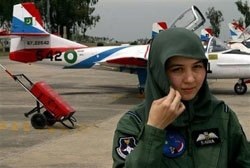What we understand about ethnicity and nationality through this series is that there is a very extensive process to truly understand where all the residents of a country truly originate from. Yes, of course there will always remain those ethnic groups in Pakistan whose roots can be traced back to the earliest civilizations that have lived in the subcontinent but then as demonstrated by the pieces about Balti and Seedi people, there is so much diversity within the DNA of our population. The Hazara people are no stranger to this.
Identified as a Persian-speaking ethno group, their ancestry has a great deal of influence from Turkic and Mongol people hailing from the Central Asian region and settling towards the modern day states of Iran and Afghanistan. They are today most largely gathered within the Hazaratjat area in central Afghanistan but have significant populations in Pakistan and Iran as well. They have retained many of their own cultural styles which are influenced by Central Asian customs, and most notably that of Afghan Tajiks. Similarly, their language dialect, while in the Persian family, has many loanwords from Turkic languages. The regional aspect also has a great impact on their religious choices and hence the group is of Shi’a Islam majority, to which many Hazara people converted during the beginning of Iran’s Safavid Dynsaty in the 16th Century,

A group of Hazara girls in Quetta wearing traditional clothing from their culture. Their head pieces have striking similarity to ones seen in Turkic culture.
Most Pakistani Hazara people can be found in Quetta. Hazara Town and Mehr Abad are two of the localities within the city with a high rate of Hazara populations. They are a community with higher literacy and modernity rates in comparison to other Hazara diaspora and have included Saira Batool, a Hazara woman and one of the first female pilots in the Pakistan Airforce. However, despite their easy integration within the larger social dynamics of Pakistan, they are a minority population within the country that experience a large degree of persecution and violence, a fact that a 2015 Reuters article made imminent. The journalist noted that since 1999, the amount of deaths in the Hazara community had been steadily increasing and this harrowing fact that he saw would only continue.

What often disappoints about a country like Pakistan is that it lives on a land that has seen so much change, diversity and discovery, yet there is so much division left between its people. The history of the subcontinent as a whole and the people that make up its population have been exposed to so many ethnic groups, rulers and empires that our history is rich, beautiful, flawed and more intricate than we can imagine. What we must celebrate is a country that is the outcome of history -- something made real by the multiple experiences and happenings that have taken place. Diversity among our population is a reminder of how insanely interconnected human lives are, even in light of their differences in the gene pool.